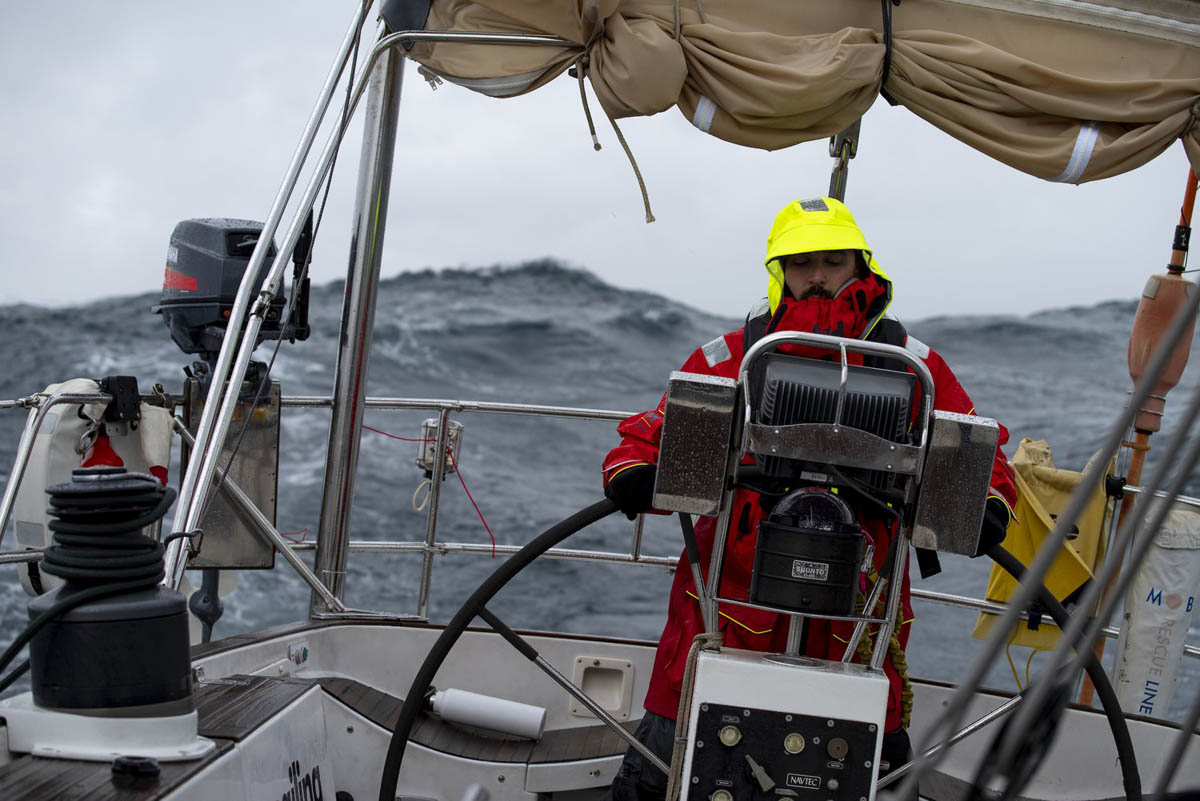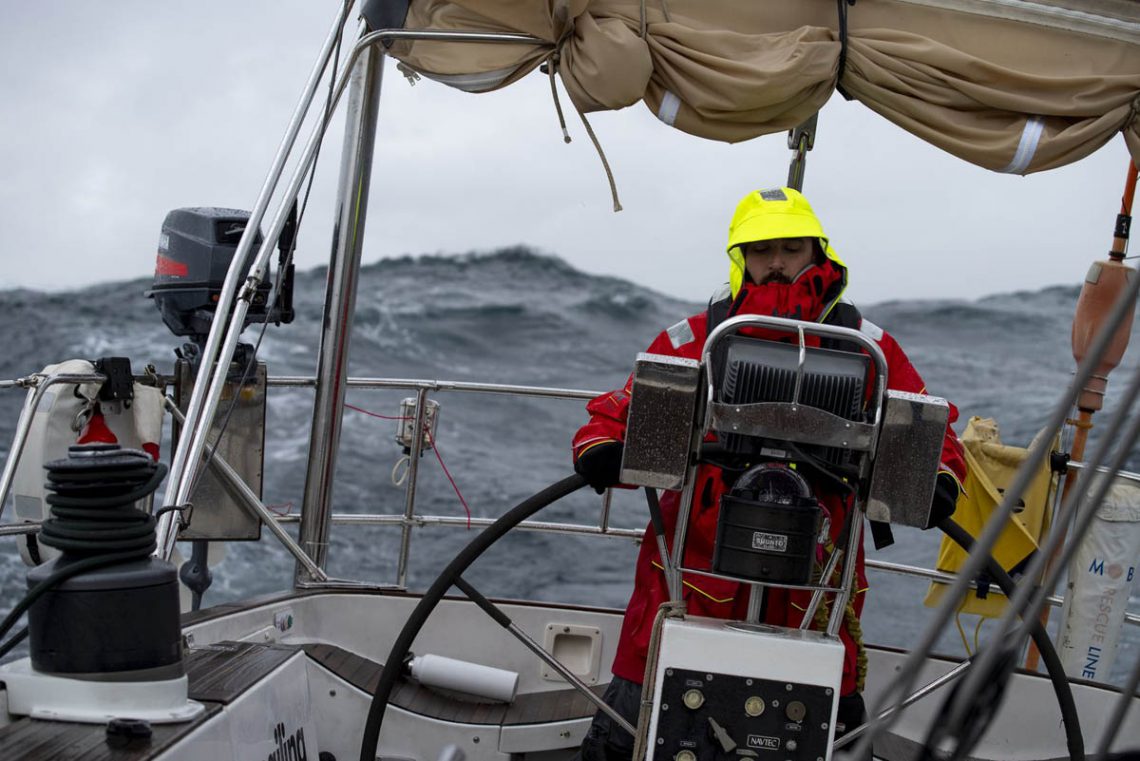
Strong winds ahead: How to steer through with confidence
The arrival of strong winds, especially when sailing outside the high season, is quite common but can be intimidating for novice cruisers. In reality, with experience and the right handling techniques, your autonomy and safety on board can increase significantly even in these conditions. Such weather presents a challenge for all sailors, and harnessing the power of the wind while managing the waves—maintaining control of both the boat and your crew—can even be exhilarating. In fact, for many sailors, navigating in strong winds is the true essence of sailing.
Let’s take a look at how to reduce the size of your sails, which ones to hoist to handle squalls, and how to manage boat speed, onboard weight, and course changes when sailing in strong winds and rough seas.
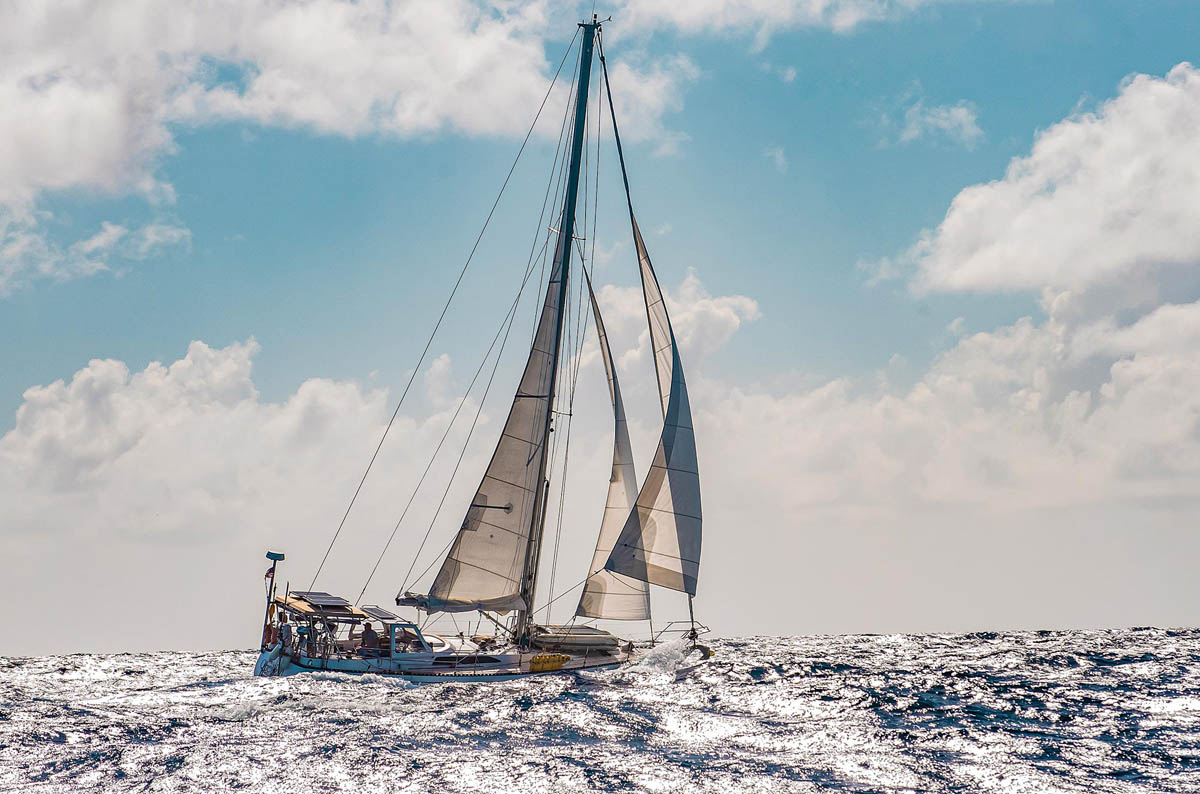
How to depower the sails
In strong wind conditions, the skipper’s goal is to depower the sails just enough to maintain control of the boat, but not so much as to reduce the boat’s ability to handle rough seas effectively and maintain a good cruising speed. Moreover, it is well known that slowing down too much while sailing will increase the time needed to reach the destination, with all the associated consequences: compromised course plan, arrival after dark, missed mooring reservations, etc.
There are several ways to reduce the power of the sails, ranging from adjusting sail trim, changing the angle of attack, to reducing the sail area exposed to the wind—such as using reefing points on the mainsail or a furling jib/genoa for the headsails.
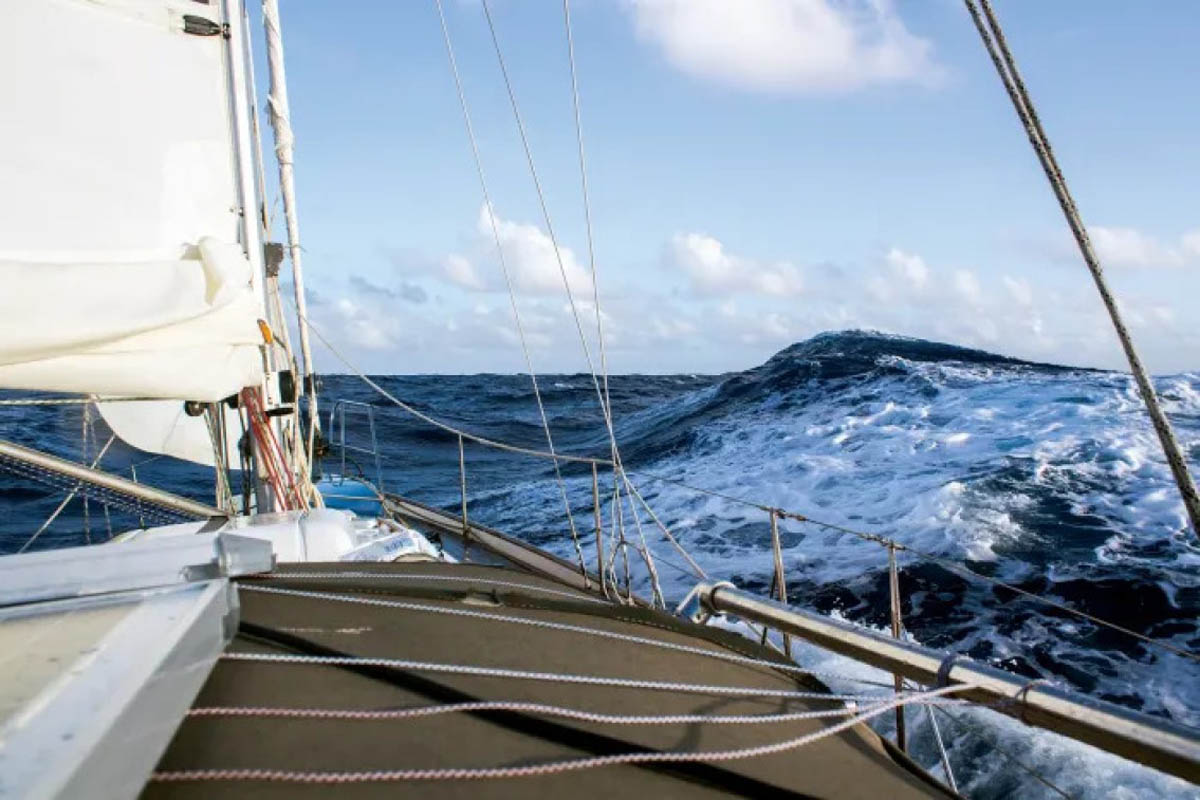
Always reduce the headsail first
When the wind becomes too strong, there comes a point where it is necessary to reduce the sail area. In these conditions, a boat with reduced sails can provide significantly better speed, control, and comfort compared to a boat with all sails fully set. The first step is to reduce the size of the headsail. Generally, a smaller headsail combined with a larger mainsail results in better speed and greater control in waves or gusts. Regardless of your sail plan, if the wind strengthens, switch to a smaller headsail as soon as possible—while the maneuver is still relatively easy and does not pose difficulties for the crew.
Depending on your configuration, you can reduce the headsail by switching to a smaller jib or by furling the genoa. Furling genoas allow you to reduce sail area without changing the headsail, which is very convenient, especially for short-handed crews. Modern furling sails achieve excellent performance, but the shape of a partially furled genoa will never be as efficient as a full-size sail. A sail set that includes a large genoa and a smaller jib can provide excellent performance, control, and comfort even in strong winds. Of course, this requires purchasing an extra sail, which will take up additional storage space. However, the shape of a smaller jib provides better performance and control than a furled genoa.
If the boat remains overpowered even with the smaller headsail, the next step is to reef the mainsail or furl it around the boom.
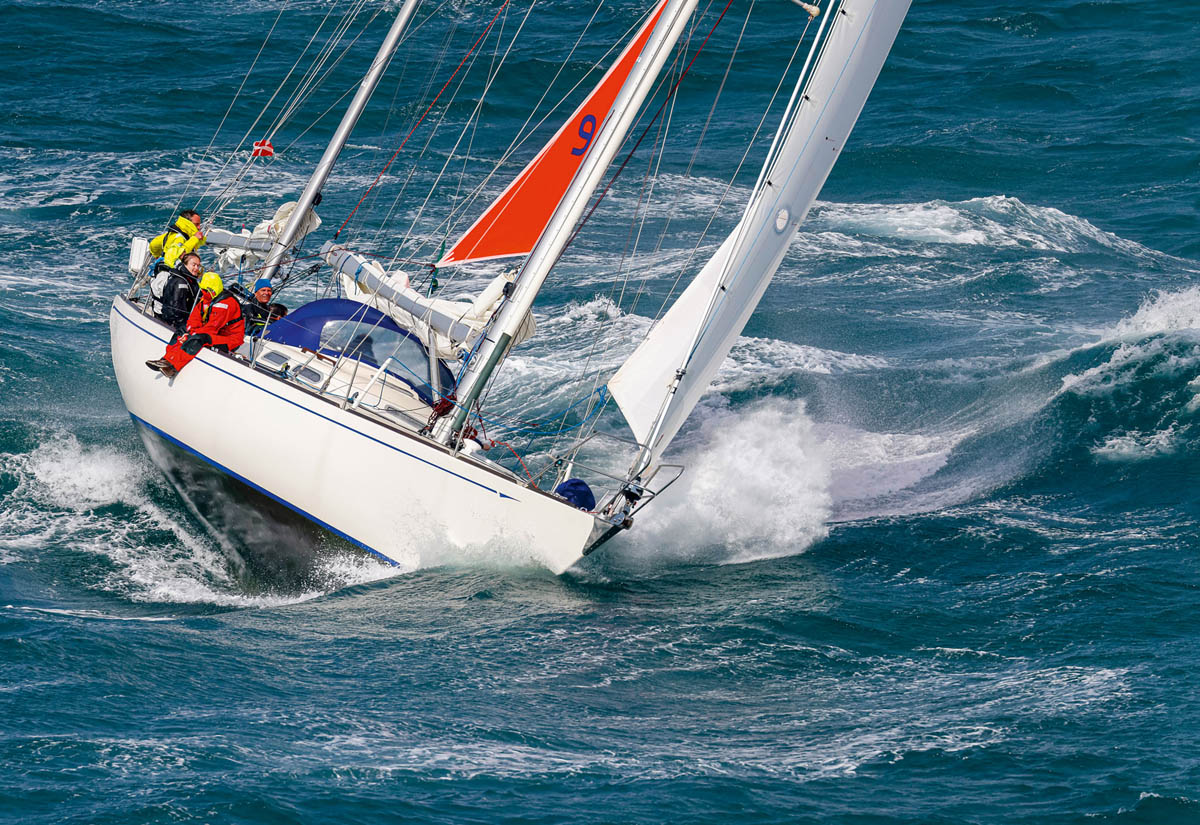
Speed and weight distribution onboard
The waves that accompany strong winds can be as much of a problem as the wind itself. Sailing with depowered sails in waves can leave you at their mercy. Moreover, sailing close-hauled against an increasing sea can be not only uncomfortable but also dangerous for the crew and equipment. The boat’s speed greatly affects performance and crew comfort in heavy conditions. Sometimes slowing down is necessary, while in other situations adding power and speed can help you handle larger waves and improve your progress.
It is also possible to improve the boat’s behavior in waves by shifting weight from the bow and concentrating it amidships, as low as possible. Before heavy seas arrive, consider moving the anchor and chain from the bow locker and stowing them amidships, perhaps in a couple of large canvas bags.
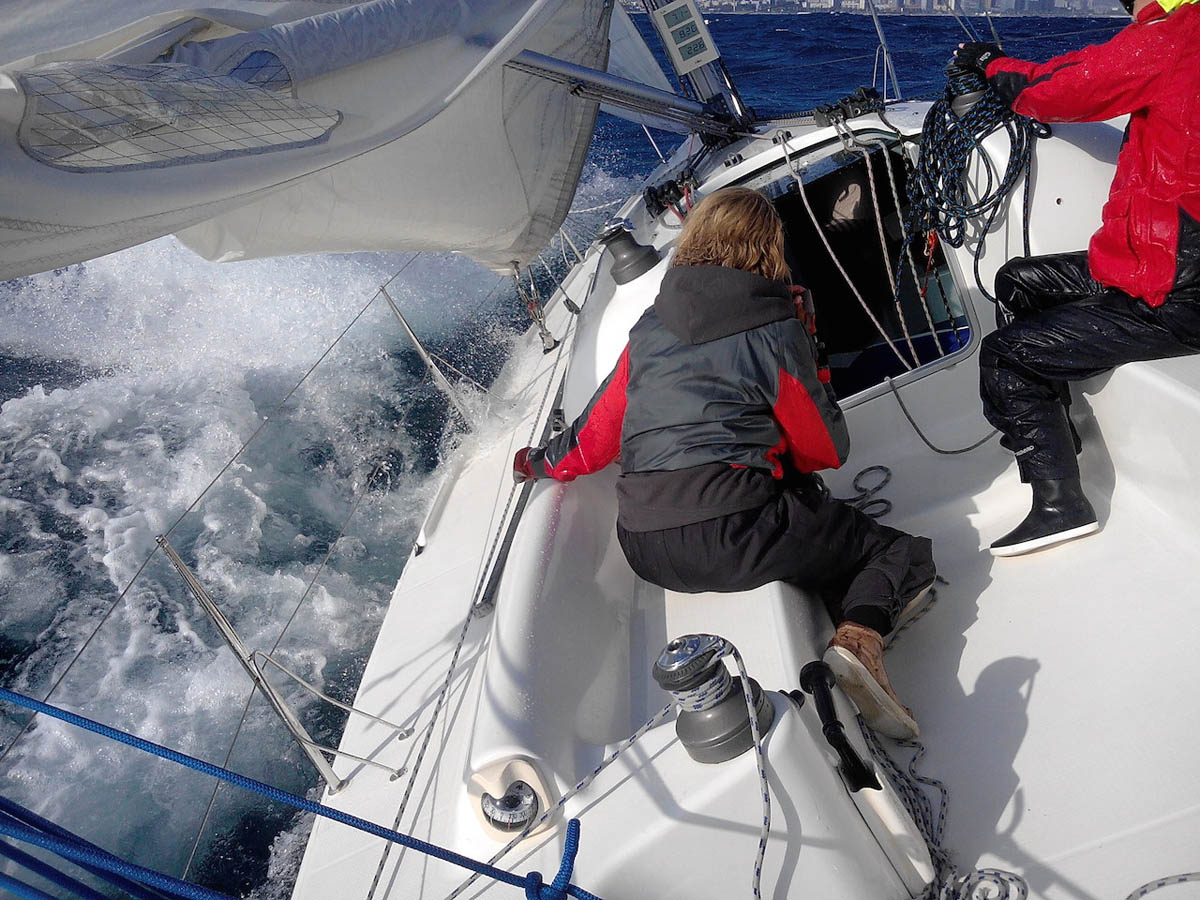
Tacks and jibes in strong wind
In windy conditions, the waves can make maneuvers for changing direction difficult. When tacking, look for a relatively calm spot and begin the tack as the bow rises on the wave. Push the helm so that the next wave helps the bow drop down onto the new tack. In heavy seas, it may be impossible to tack at all. In such cases, jibing will be necessary.
Of course, jibing in heavy wind is not easy. Often, the best way to manage the headsail in these situations is to furl it. After that, maneuvering speed becomes important. Keep in mind that as the boat surfs on a wave, the loads on the sails decrease, and this is the moment to execute the jibe. Once the boat is under control, unfurl the headsail again. Use a winch to handle the furling line while unfurling, as the load will be too high to manage by hand.
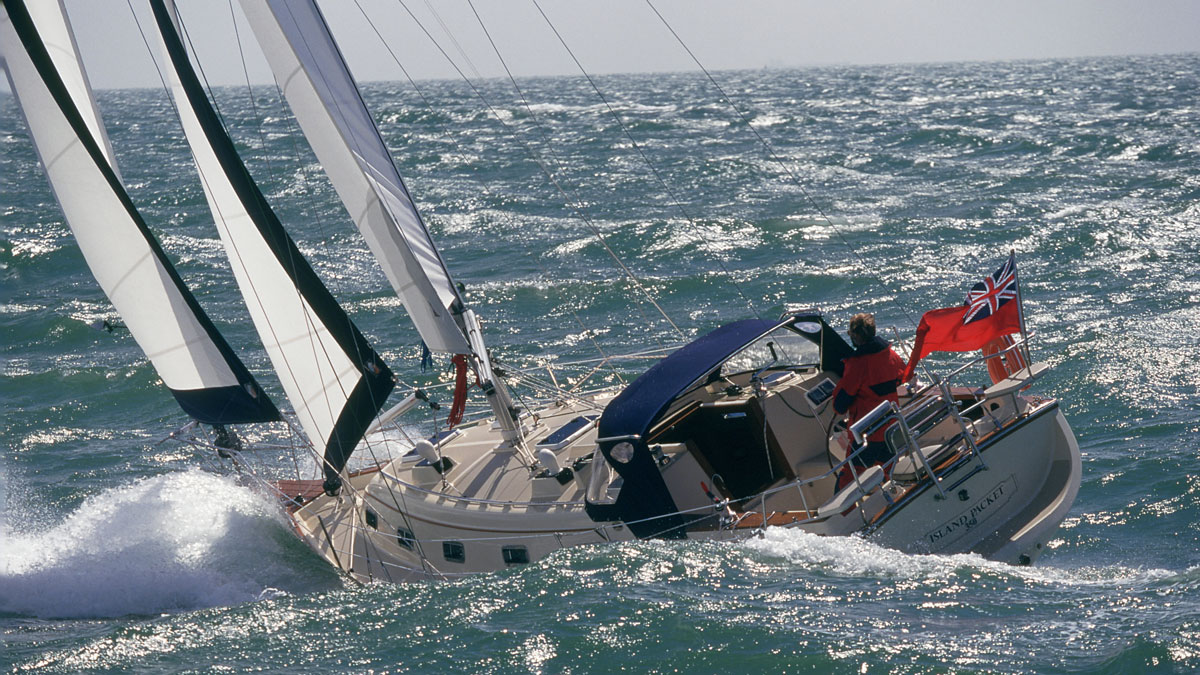
Sail and engine when the going gets tough
As a last resort, you can opt for a sail-and-engine configuration. Motoring with the sails up allows better progress against the wind, without the violent pitching that occurs when motoring without sails. In heavy seas, sails are necessary—even just a reefed mainsail—to provide stability and additional power. Monitor the heel angle, set the autopilot, and keep an eye on the sea.
If you are sailing with a reefed mainsail and a furled genoa and still feel overpowered, remove the headsail and rig a storm jib. Motoring against wind and waves with only the mainsail and a small headsail is much better than motoring without sails.
Tips for motoring
When motoring in heavy seas and strong winds, it is important to follow some fundamental precautions. Among these, ensure that cooling water flows through the engine. On some boats, the cooling intake rises too much when heeling and no longer draws water. Violent pitching can also introduce air into the fuel line, which may stall the engine and require bleeding to restart it. The pitching motion can also stir up sediments from the bottom of the fuel tank, which can clog the fuel lines or filter.
You May Also Like

A 14-day sailing cruise through the delights of Western Kvarner and Zadar
03/12/2025
Tropea, one of the most beautiful seaside villages in Italy
28/11/2023



